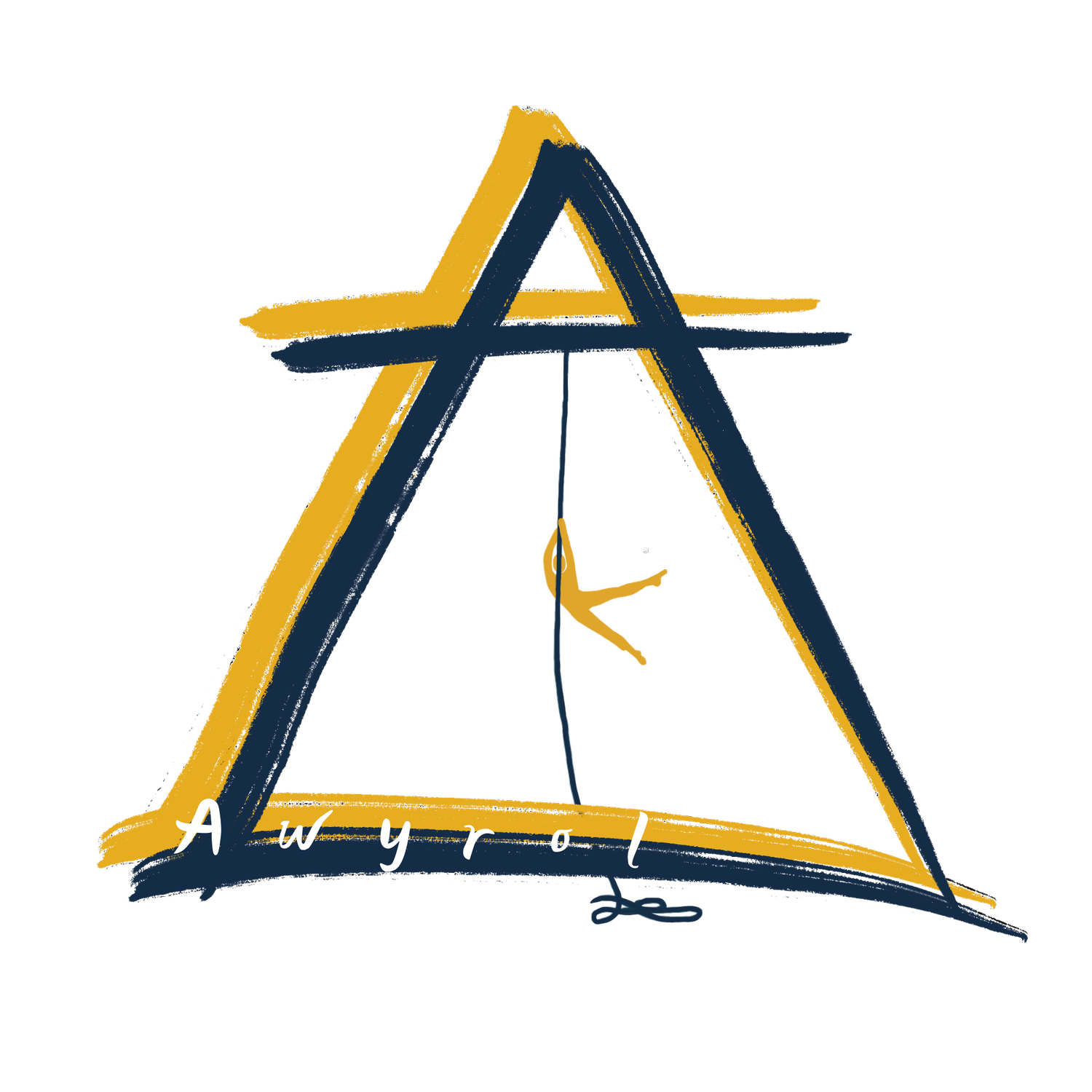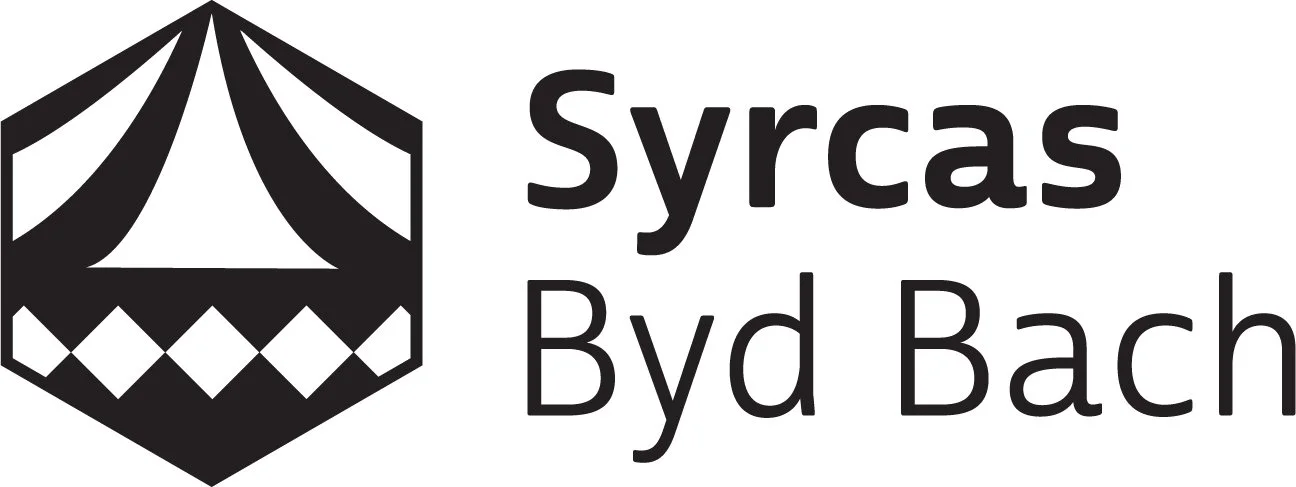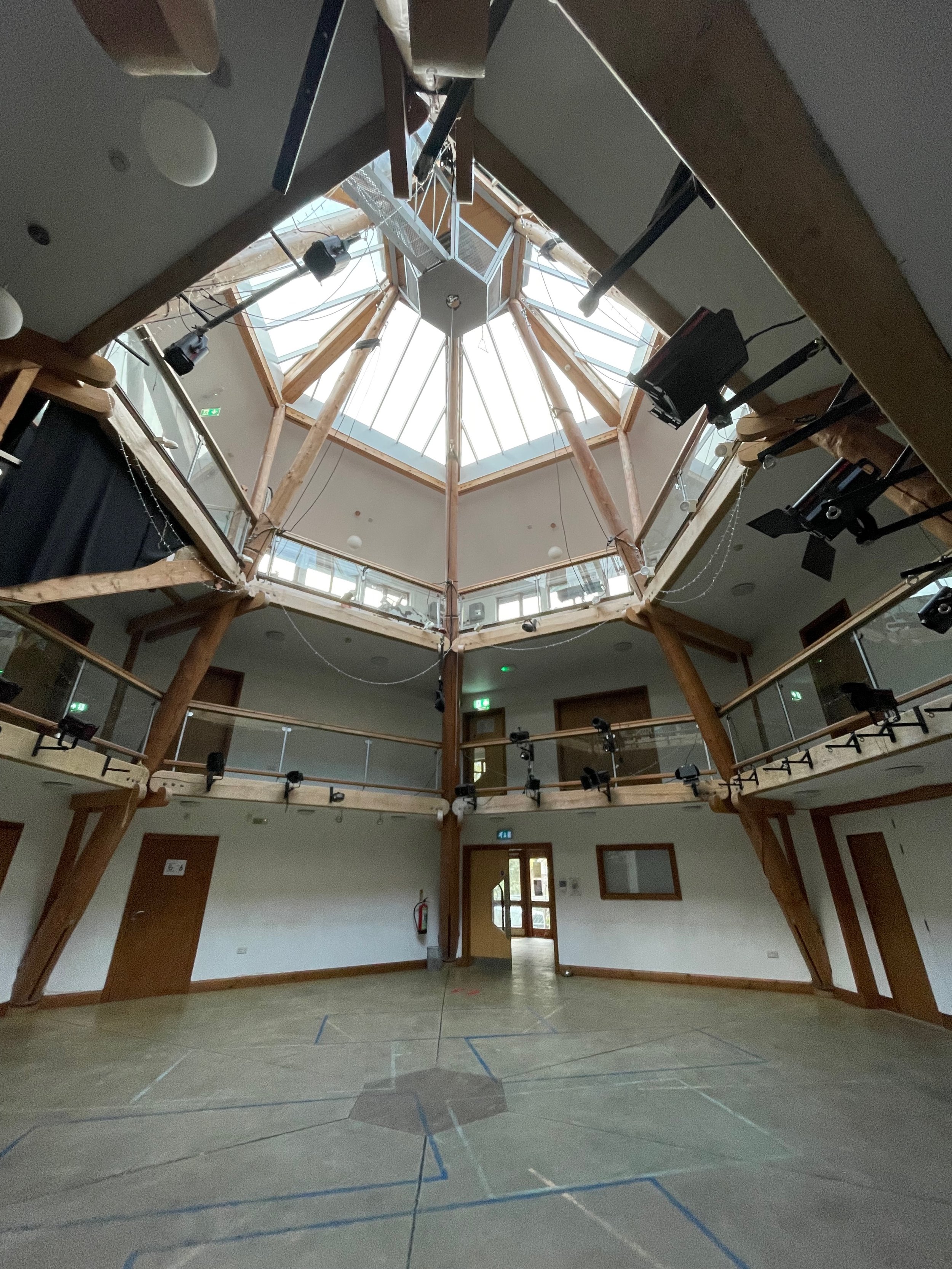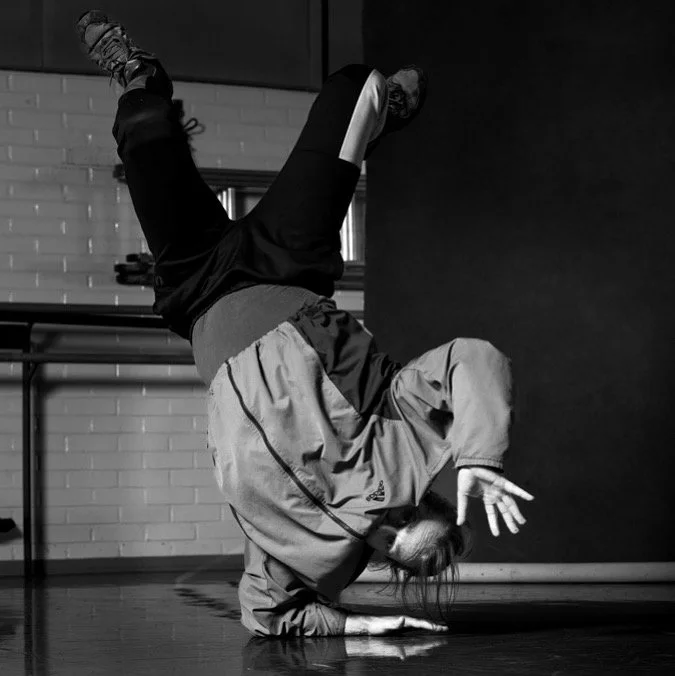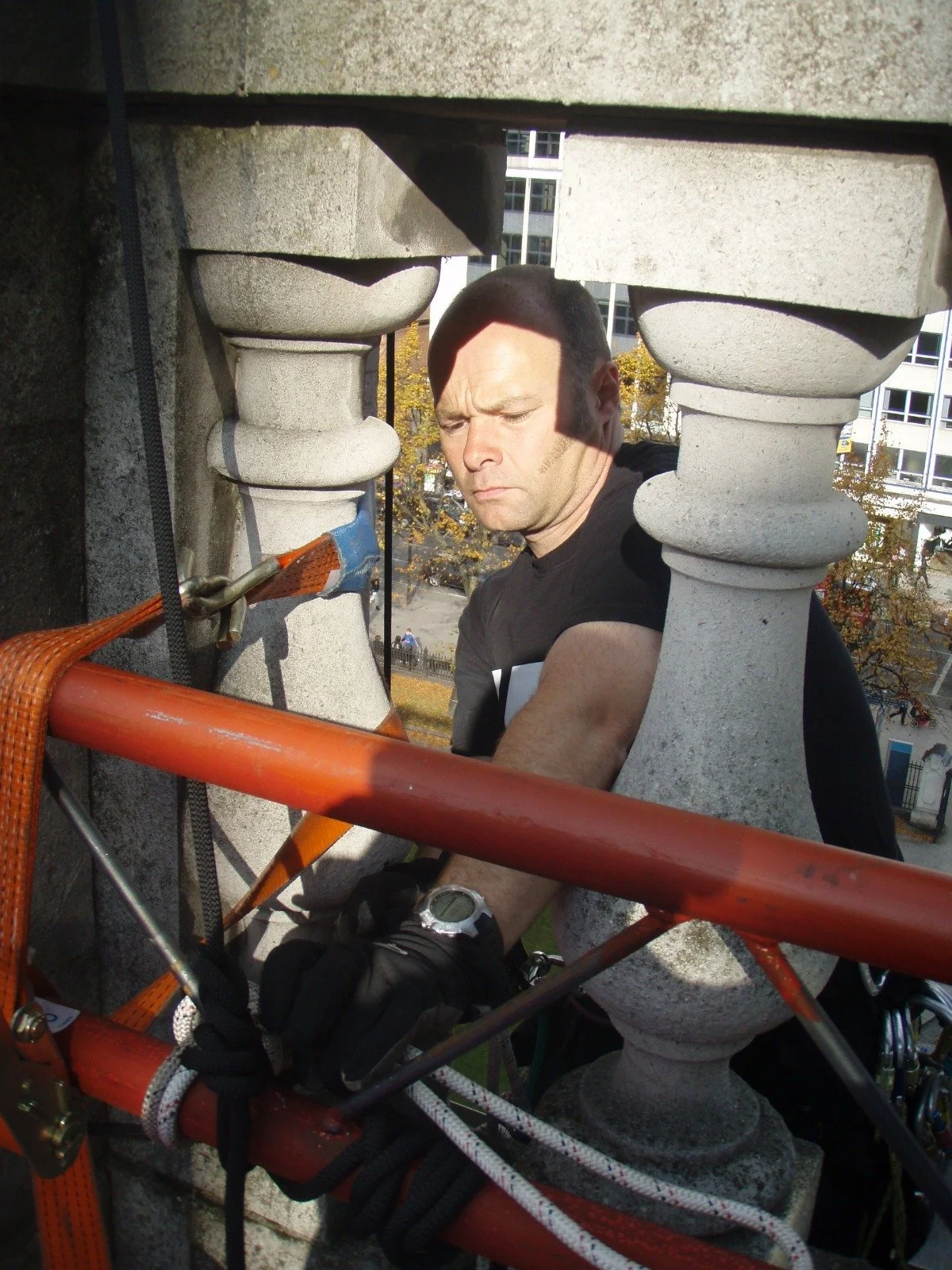Momentum Lab.
Labordy Momentwm / Momentum Lab is an experimental movement research project at the intersection of dance, aerial circus and site-specific performance based at Small World Theatre, West Wales. It brings together a diverse group of performing artists from across Wales/Europe with a particular and extraordinary expertise in the use of momentum in human movement to share and develop skills, explore the architecture of the space, and create radical new aerial/acrobatic vocabulary unconstrained by current circus norms.
The Project.
From 8-14 January 2026 Momentum Lab brings together a small group of extraordinary artists into an extraordinary space for aerial circus in West Wales. These are performing artists from Wales and Europe with a particular expertise in the use of momentum in human movement in relation to:
bodies (contact improvisation, breaking, capoeira)
structures, surfaces & sites (parkour, site dance, climbing)
vertical aerial apparatus (rope, straps, sling, harness, bungee)
non-Western movement forms (African dance, capoeira)
Across this focused residency they will utilise and explore the aerial apparatus and architecture of the space with the intention of:
sharing expertise, techniques, ideas and insights around the use of momentum in each practitioner’s movement form (aerial circus/harness, breaking, contact improvisation, parkour, capoeira, African dance)
analysing and translating momentum-based techniques across disciplines
generating wholly novel aerial circus vocabulary outside of current forms/norms
challenging existing aerial circus/dance aesthetic constraints (including the eurocentric/Western-dance aesthetic which currently dominates aerial circus) in relation to these acrobatic forms
repurposing aerial rigging in new ways to support this work
documenting process through film, both as output and iterative part of process
cataloguing new movement vocab
The Artists.
Background.
In 1972 Steve Paxton initiated the now ubiquitous dance form contact improvisation through a piece of movement research Magnesium.
A score in which 11 male dancers/gymnasts threw themselves and each other into the air, collided, caught and fell onto the floor.
“They tried not to work with any ‘learned’ dance vocabulary but simply from reflexes…the raw materials were the physical forces of gravity and momentum… and the consequences of all these actions”.
Five decades later, Momentum Lab is an exciting update to this concept, drawing on all the substantial knowledge that has since been developed in related movement fields and putting it into contact with aerial circus/dance apparatus, modern aerial rigging and all the possibilities that these provide.
Momentum Lab is Magnesium reimagined, with rigging and ropes.
Outcomes.
This is experimental movement research, so the intention is not to produce work for performance at this stage rather to give space for exploration without expectation. However, there is the potential for this work to become the basis for a show based on a future round of development funding.
Outputs will include:
enhanced and enriched skill base of contributing practitioners to take back into their respective disciplines
new perspectives on momentum based techniques for contributing practitioners to take into their performance, making and teaching work
novel aerial movement vocabulary to be captured and catalogued on film for the wider circus community
film documentation
Why is it radical?
Currently most movement research in aerial circus is done BY aerialists or circus-trained artists with the all the pre-existing vocabulary/aesthetics/trends of that form fixed in their bodies.
Labordy Momentwm // Momentum Lab is radically different because it brings together highly skilled and curious acrobatic practitioners from adjacent forms (but with the support of a rigger and aerialist with a background in non-stylised movement and task-based performance) to create wholly new ideas about how this apparatus can be used in relation to space, structures and other bodies.
Support.
Labordy Momentwm // Momentum Lab is funded by Cyngor Celfyddydau Cymru // Arts Council of Wales and supported and partnered by Theatr Byd Bach // Small World Theatre.
